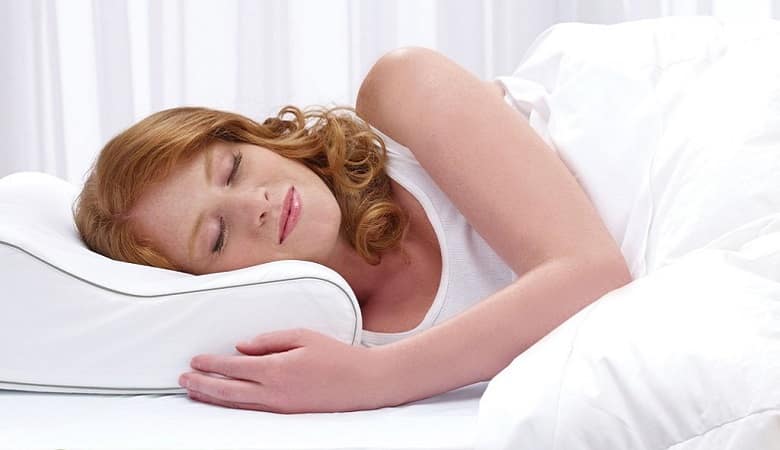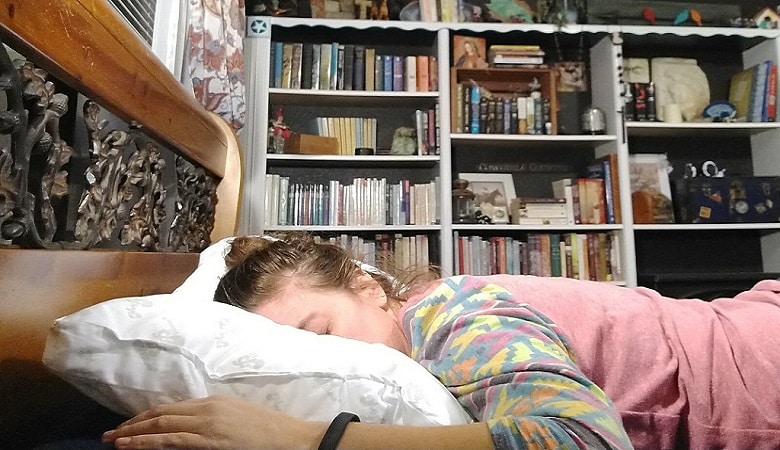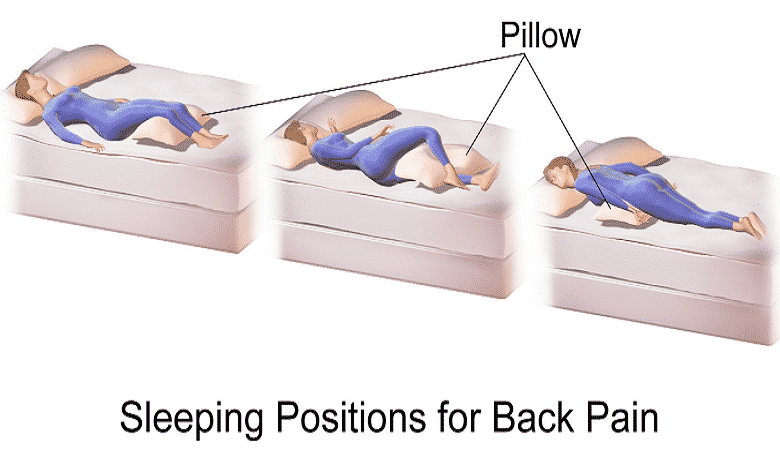Our sleep is important to us, and can make the difference in our day starting out great or not so great. Our bed should be a place of comfort, and the pillows we lay on play a large role in just how comfy our bed is.
Pillows are a symbol of comfort and relaxation, and they have significant impact on the quality of our sleep. Twenty-nine percent of Americans sleep with only 1 pillow, 43% sleep with 2 pillows, and more than a quarter of Americans sleep with 3 or more pillows.
How many pillows should you sleep with? Most people only need to sleep on one good pillow for healthy neck support and quality rest. The reason why so many of us need extra pillows is because we haven’t found the best sleeping position. The best sleeping position is one that keeps the head, neck, and spine in neutral alignment.
Bad sleep positions can lead to health issues, from back and neck pain to fatigue and headaches.
As we are sleeping, our muscles relax and our body recovers from the course of the day. This is why it’s so important to keep a good sleeping position.
The pillow is designed to support our head and neck as we sleep, with the aim to align our spine, which helps to prevent pain and tension when we awake in the morning. In this article, we’ll look at how to choose that one good pillow, and look at how best to position extra pillows for most sleep positions.
Why You Only Need One Pillow – Choosing The Right Pillow For Your Sleeping Position
The factors that impact whether the body is in neutral alignment when we’re sleeping, includes body type, sleep position, and the type of mattress.
The pillow can also be a factor. Choosing a pillow that is too high or too low can lead to neck soreness, stiffness, and inflammation. The right pillow should be one that allows our neck to be in neutral alignment with our body, which means the neck is supported with normal cervical curvature.
This is also the reason why many people choose to sleep with more than one pillow, simply because the one pillow they have isn’t the right fit for their need (likely to low) so they try to solve it with an additional pillow.
Read on to learn which type of pillow you should get depending on your preferred sleeping position:
Side Sleepers

The majority of people are side sleepers (70%). When sleeping on the side, our head is tilted, and the neck is bent. Resting our head on our shoulder or arm will tire and our muscles and will soon become uncomfortable.
Finding one high-quality pillow that fills the gap between the shoulders and neck, would work perfectly. Comfortable pillows for side sleeping are between 3 and 6 inches tall, and firm. The pillow should be firm enough to hold our head in line with the rest of the body. Anything too soft or too firm can lead to headaches or soreness.
Back Sleepers
Back sleepers lay in the most natural, relaxed positions for the back, as this position respects the alignment of our body.
A good pillow for a back sleeper will hold their head in place between their shoulders; if the pillow is too thin it could cause the neck to crane backward. A pillow too tall can push the chin forward and result in pain. Low to medium-loft pillows are best suited for back sleepers; this can be anywhere from 1 to 5 inches thick.
Stomach Sleepers

It’s hard for stomach sleepers to find neutral spine and neck alignment. To get healthy sleep and prevent future neck pains, it’s recommended to convert to one of the other styles of sleeping (side sleeping/back sleeping), as stomach sleeping is bad for the body.
Nonetheless, stomach sleepers are limited to thin pillows, less than 3 inches thick. Placing a single pillow below the head keeps the spine as straight as possible. If they pick a pillow that’s too tall, it’ll push their neck back towards their spine, creating discomfort.
How Extra Pillows Support The Body

There are ways sleeping with more than one pillow can enhance comfort and support when sleeping, but it all depends on your sleep position. Sleep position is truly the guiding force to all things pillow.
We should not need an added pillow if we have the right one for each position, but if we don’t, positioning an extra pillow as the following should provide us with the added comfort we need:
- Side Sleepers – Place a pillow between the knees to relieve pressure on the hips and lower back. Pull the knees up slightly towards the chest.
- Back Sleepers – Place a pillow under the knees to support the natural curve of the lower back. This will reduce stress on the spine.
- Stomach Sleepers – Place a flat and thin pillow under the stomach and pelvis area. This will keep the spine in better alignment.
- Pregnant Women – Place a body pillow or firm pillow behind the back to help support side sleeping, and place a pillow between bent knees to take pressure off the lower back. They can also tuck a pillow under the stomach while side sleeping to keep the back aligned, and to avoid neck strains.
Sleeping Without A Pillow (for non-side sleepers)

While we’ve identified reasons to sleep with at least one pillow, it may be best to not sleep with a pillow at all. When we’re walking upright, our head and neck are in vertical alignment at the top of the spine.
When we lay our vertical bodies down flat, it would make sense that we would be most aligned pillow-free. Some health benefits to not using a pillow to sleep include:
- Reduction of acne
- Prevention of wrinkles
- Prevention of back and neck pain
- Straighten and normalize bone structure
- Avoid stress
- Prevent inflammation
- Prevent or reduce depression
Sleeping without a pillow is not good for side sleepers.
